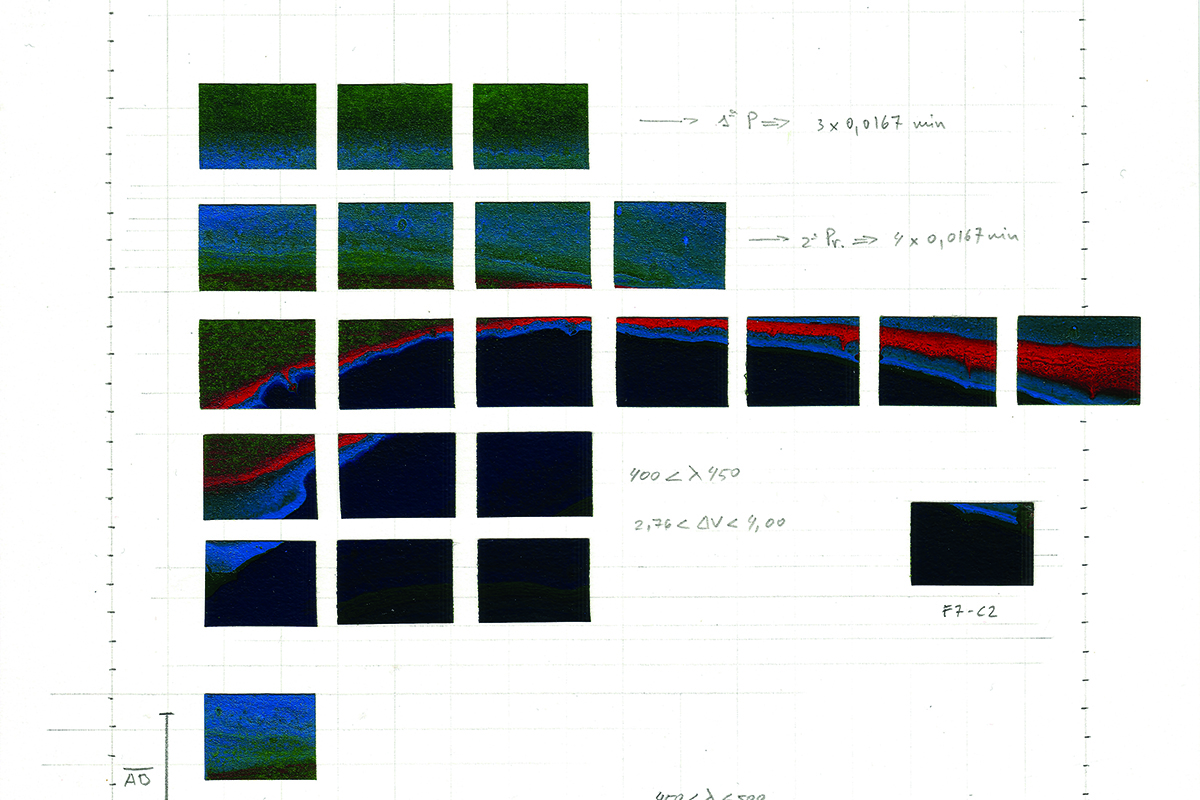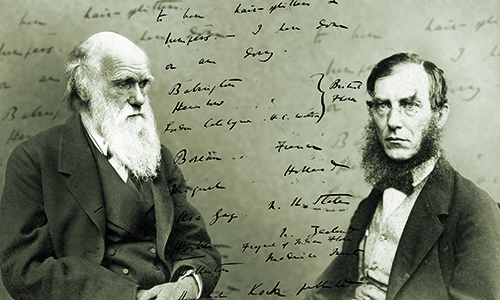Is the scientific method a myth?
Perspectives from the history and philosophy of science

Many philosophers and historians of science deny that there is a single scientific method that applies across all scientific disciplines. Here I distinguish normative from descriptive versions of this thesis. I defend the thesis that there are general normative principles that govern every science.
Keywords: Darwin, Einstein, evolution, inference, methodology.
Lumpers and splitters
In many areas of inquiry, both inside and outside of science, there is a division between the «lumpers» and the «splitters». There are those who emphasize similarities and those who emphasize differences. The first person to use these terms in this way may have been Charles Darwin who in 1857 applied them in a letter he wrote to his friend Joseph Dalton Hooker about the problem of how to separate one biological species from another: «those who make many species are the splitters and those who make few are the lumpers».
If you ask historians of science and philosophers of science whether there is such a thing as the scientific method, you will find that there are lumpers and splitters on that subject too. Historians are mostly splitters. They will say that the methods used in a scientific discipline have changed through time and that different scientific disciplines have different methodologies. Most historians of science are disinclined to present grand theories of scientific change, and this particularism shows itself when they think about the methods that scientists use. In the past fifty years or so, philosophy of science has moved closer to history of science than it was before. There now are more splitters and fewer lumpers in philosophy of science than there used to be. Lumping is now less fashionable, in part because the philosophy of the separate sciences has been on an upswing while general philosophy of science is now in a downturn. For example, philosophers are now less likely to discuss what a scientific explanation is than they are to discuss what an explanation in evolutionary biology is. The days of grand philosophies of science are on the wane.
«Historians are in the business of describing and explaining how science actually works, not how it ought to be done in some philosophical utopia»
And yet there still are lumping philosophers. One reason this tendency is more strongly represented among philosophers of science than among historians is that philosophers often think their job is «normative». These philosophers think their task is to describe the methods that scientists «ought» to use. Historians rarely see this as their job. They are in the business of describing and explaining how science actually works, not how it ought to be done in some philosophical utopia. Historians often believe that normative philosophy of science is absurd. This is what they frequently think, even if they are too polite to say so: «Who do these philosophers think they are, telling scientists what they should do? There are no philosopher kings, nor should there be! Scientists know best!»
Normative philosophers do not want to be kings, but they still think their goals make sense. There are two main reasons why.
Why there are general norms of scientific reasoning
The first reason comes from science itself. Scientists often are confident that there are principles of scientific reasoning that transcend the boundaries of particular disciplines. Here are quotations from two of The Greats. In the sixth and final edition of On the origin of species, which appeared in 1872, Darwin says the following about his theory:
It can hardly be supposed that a false theory would explain, in so satisfactory a manner as does the theory of natural selection the several large classes of facts above specified. It has recently been objected that this is an unsafe method of arguing. But it is a method used in judging of the common events of life, and has often been used by the greatest natural philosophers. The undulatory theory of light has thus been arrived at; and the belief in the revolution of the earth on its own axis was until lately supported by hardly any direct evidence.
Darwin, 1959
And Einstein spoke for many of his fellow scientists when he said:
It can scarcely be denied that the supreme goal of all theory is to make the irreducible basic elements as simple and as few as possible without having to surrender the adequate representation of a single datum of experience.
Einstein, 1933

The first person to use the terms «lumper» and «splitter» in this way may have been Charles Darwin (on the left) who in 1857 applied them in a letter he wrote to his friend Joseph Dalton Hooker (on the right) about the problem of how to separate one biological species from another: «those who make many species are the splitters and those who make few are the lumpers». /Mètode
Of course, the fact that Darwin and Einstein both claim that there are methodological principles that apply in multiple areas of science doesn’t ensure that what they say is true! Einstein is famous for warning in that same 1933 lecture that «if you want to find out anything from the theoretical physicists about the methods they use, I advise you to stick closely to one principle: do not listen to their words, fix your attention on their deeds». This is a good point. But if you think that scientists are the sole authorities on how scientific reasoning should proceed, the testimony of scientists themselves should make you pause. If Darwin and Einstein are right, there are methods of reasoning that span different scientific subject matters. Scientists rarely are trained and rarely are interested in questions with this kind of generality. Geneticists study genes and astronomers study galaxies; neither specializes in the study of patterns of reasoning. The study of patterns of reasoning is something that philosophers aim to understand.
The second reason for thinking that the project of constructing normative philosophical theories about the scientific method makes sense comes from within philosophy itself. In the twentieth century, logic became more and more of a mathematical discipline, but before then it was solidly anchored in philosophy. A central subject of logic was and still is the study of arguments that are deductively valid. Validity is a technical term. The following two arguments each have two premises and a single conclusion. Both are deductively valid, meaning that if the premises are true, then the conclusion must be true:
Socrates is a human being.
All human beings are mortal.
Socrates is mortal.
The Parthenon is made of stone.
All things that are made of stone are hard.
The Parthenon is hard.
Not only are both arguments deductively valid; they are valid for the same reason. The arguments have the same «logical form». That is, each can be obtained from the following skeleton by substituting words for letters:
Individual i is an X.
All Xs are Ys.
Individual i is a Y.
Deductive validity has nothing to do with the subject matters of arguments. What makes an argument valid is its form, not what it is about.
Scientific arguments are often not deductively valid. They often begin with observations and end with conclusions that are very general and describe parts of the world that we cannot observe. The fact that these arguments are not deductively valid is not a criticism of them; these arguments aim to defend conclusions that go beyond the observations that are their premises. Many scientists, philosophers, and statisticians have thought that the rules for determining whether a nondeductive argument is strong or weak are provided by the mathematical theory of probability. The precedent of deductive logic has had a strong influence. Just as deductive logic generalizes across arguments that concern wildly different subject matters, nondeductive logic does the same. Statisticians have developed theories of reasoning that apply to weather systems, economies, and genetics. The tools they have constructed are general; they are not limited in their application to a single subject matter. Normative philosophy of science is in the same line of work.
Common ancestry, plagiarism and the law of likelihood
Let me give an example. One of the central concepts in Darwin’s theory of evolution is common ancestry. Darwin thought that all living things now on earth trace back to one or a few «original progenitors». The other central idea in the theory is that natural selection is the main but not the exclusive cause of the diversity we see in living things. It is unfortunate that Darwin’s theory is now widely thought of as the theory of evolution by natural selection, with no mention made of the common ancestry idea. Rather than calling it «the theory of evolution by natural selection», it is better to call it «the theory of common ancestry plus natural selection» (Sober, 2012). Because his theory has two parts, you might think that when Darwin discusses in The origin of species which characteristics provide the strongest evidence for common ancestry, that he’ll cite the characteristics that evolved because of natural selection. This is the opposite of what he actually says:
[…] adaptive characters, although of the utmost importance to the welfare of the being, are almost valueless to the systematist. For animals belonging to two most distinct lines of descent, may readily become adapted to similar conditions, and thus assume a close external resemblance; but such resemblances will not reveal – will rather tend to conceal their blood-relationship to their proper lines of descent.
Darwin, 1859
The best evidence for common ancestry comes from characteristics that did not evolve by natural selection. We observe that dolphins and sharks are both shaped like torpedoes; Darwin is saying that this similarity is not strong evidence that dolphins and sharks have a common ancestor. The reason is that the torpedo shape is useful to these organisms – it helps them to swim fast. The similarities that provide strong evidence for common ancestry involve traits that are not adaptive for one or both of the organisms considered. This is why the tailbones that monkeys and humans have are strong evidence for common ancestry.
So far it may seem that Darwin’s idea is specific to the subject matter of evolutionary biology. In fact, it is not. Precisely the same form of reasoning comes up in entirely different subject matters. The philosopher of science Wesley Salmon, in his 1984 book Scientific explanation and the causal structure of the world, describes the following example. The students in a university philosophy class are told by their professor to write an essay on an assigned topic. When the students hand in their essays, the professor sees that two of them are virtually identical. The professor realizes that the similarity of the two papers might be an improbable coincidence; perhaps the students worked separately and independently and just happened to hit on nearly the same sequence of words. But it is far more plausible to suspect that the students plagiarized; maybe they worked together, perhaps going to the Internet together to find an essay that they would each copy. Let us now reflect on the different sorts of similarities that the two students’ essays might exhibit. Both of the essays use nouns, but that is not strong evidence for plagiarism. Rather, it is the fact the students misspell the same words in the same ways that provides strong evidence for plagiarism. Darwin’s distinction between similarities that are useful and similarities that are not applies here. The misspellings are useless to the students, though they are useful to the professor who is thinking about whether the two essays trace back to a common Internet ancestor.
«In the past fifty years or so, philosophy of science has moved closer to history of science than it was before»
In his 1965 book The logic of statistical inference, the philosopher Ian Hacking formulated a principle that applies to both Darwin’s remark about common ancestry and to Salmon’s example about student plagiarism. Hacking called this principle «The Law of Likelihood»: Observation O favors hypothesis H1 over hypothesis H2 precisely when Pr(O | H1) > Pr(O | H2). The expression «>» means «greater than» and «Pr(O | H1)» represents the probability that H1 confers on O. If H1H1 says that the observation O was to be expected and H2 says that O was very surprising, the law says that we should conclude that O favors H1 over H2.
Before we apply the law to the examples from Darwin and Salmon, I want to describe what it says about a much simpler example. You are looking at a large urn that is filled with balls; each ball is green or red. You have no idea what percentage of the balls in the urn are green but you want to consider two hypotheses: (H1) 80 % of the balls in the urn are green. (H2) 30 % of the balls in the urn are green. You draw one hundred balls from the urn and see that 85 of them are green. What does this observation tell you about the two hypotheses? Notice that your observation doesn’t prove that H1 is true and that H2 is false. You cannot deduce that one of them is true and that the other false from what you have observed. Given your one hundred observations, each of the hypotheses might be true; neither is ruled out. However, there is a difference between them. The first hypothesis says that what you observed was probable while the second says that what you observed was very improbable. The law of likelihood tells you to conclude that your observations favor H1 over H2 for that reason.
«The days of grand philosophies of science are on the wane»
Now let’s move from an urn full of balls to the two students and their essays. Let us consider first the significance of the identical misspellings in the two essays:
Pr(the two essays contain identical misspellings | the two students plagiarized from a common source) >>
Pr(the two essays contain identical misspellings | the two students worked separately and independently).
The double “>>” means that the first probability is much bigger than the second. The misspellings strongly favor the plagiarism hypothesis over the hypothesis that the students worked separately and independently. Now let’s apply the law of likelihood to the observation that the two essays contain nouns:
Pr(the two essays contain nouns | the two students plagiarized from a common source) =
Pr(the two essays contain nouns | the two students worked separately and independently).

In his 1965 book The logic of statistical inference, the philosopher Ian Hacking formulated the law of likelihood. / Visserligen
You would expect the essays to contain nouns in their essays whether or not the students had plagiarized; the observation that both essays contain nouns fails to discriminate between the two hypotheses. The same pattern applies to useless and useful similarities in Darwin’s discussion:
Pr(monkeys and human beings have tail bones | monkeys and humans have a common ancestor) >>
Pr(monkeys and human beings have tail bones | monkeys and humans do not have a common ancestor).
Pr(dolphins and sharks are shaped like torpedoes | dolphins and sharks have a common ancestor) =
Pr(dolphins and sharks are shaped like torpedoes | dolphins and sharks do not have a common ancestor).
In both the example about the student essays and the example about biological evolution, the law of likelihood explains why one similarity provides strong evidence that discriminates between the two hypotheses whereas the other similarity does not. The underlying principle is not about biology in particular or about student plagiarism in particular. The principle is very general, concerning how common cause and separate cause explanations are to be evaluated, regardless of their subject matters.
We are now knee deep into philosophy. We have left the specifics of evolutionary biology and student plagiarism behind. But new problems now appear. The urn example makes the law of likelihood sound like a reasonable principle, but is there some deeper justification that it has? Also, there are interesting questions concerning how the law applies to the examples of plagiarism and common ancestry. What assumptions are needed to show that the inequalities and equalities I have described are true? Are there assumptions that would alter these conclusions? Contrary to Darwin, maybe there are some adaptive similarities that provide strong evidence of common ancestry; perhaps the example of the torpedo shape shared by dolphins and sharks is not typical of all adaptive similarities. I explore these further puzzles in my book Ockham’s razors – A user’s manual.
A confession
Let us return to the title question of this essay: is there such a thing as «the» scientific method, a method of reasoning that applies to all scientific subject matters? This is not a historical question about how scientists have actually reasoned, but a normative question about whether there are rules of reasoning that all scientists should follow. There is considerable controversy about this question in current philosophy of science, but now I can confess: I am a lumper.
References
Darwin, C., 1859. On the Origin of Species by Means of Natural Selection, or the Preservation of Favoured Races in the Struggle for Life. John Murray. London. (Facsimile, 1964. Harvard University Press. Cambridge, MA).
Darwin, C., 1959. The Origin of Species. A Variorum Edition. M. Peckham. University of Pennsylvania Press. Philadelphia.
Einstein, A., 1933. «On the Method of Theoretical Physics». Herbert Spencer Lecture. Oxford University Press. Oxford.
Hacking, I., 1965. The Logic of Statistical Inference. Cambridge University Press. Cambridge.
Salmon, W., 1984. Scientific Explanation and the Causal Structure of the World. Princeton University Press. Princeton.
Sober, E., 2012. Did Darwin Write the Origin Backwards? Prometheus Books. Amherst. New York.
Sober, E., 2015. Ockham’s Razors – A User’s Manual. Cambridge University Press. Cambridge.





